4142 alloy steel is used widely and investigated due to its exceptional strength, toughness, and flexibility. This document delves into the chemical make-up, mechanical properties, and heat treatment of 4142 alloy steel while showcasing its most distinguishing features. Moreover, the discussion will cover the areas of heavy industrial tools and machinery manufacturing where the alloy is most effectively utilized. From engineers and manufacturers to those interested in material science, this piece aims to inform readers of all sides of the multi-doored world of 4142 alloy steel.
What are the mechanical properties of 4142 alloy steel?
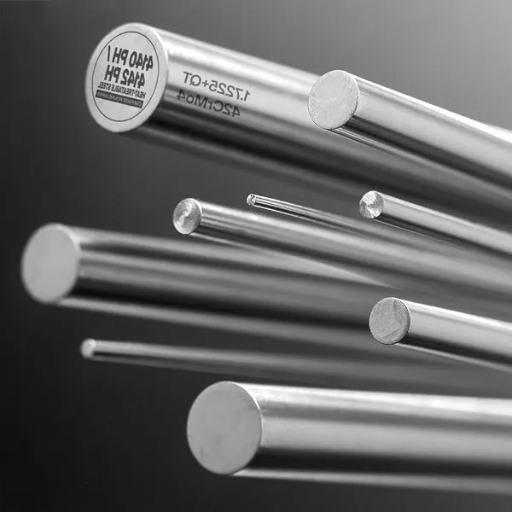
There is a reason why 4142 alloy steel is so widely utilized across numerous and diverse industries: its exceptional mechanical characteristics. These include but are not limited to, high tensile strength (up to 850 – 1000 MPa depending on heat treatment), excellent toughness, and good wear resistance. The alloy’s optimal combination of ductility and hardness makes it an ideal candidate for stress-entering applications. Moreover, sustaining heavy loads and high temperatures without losing mechanical integrity makes the material versatile in industrial surroundings.
How does the carbon content affect its hardness?
An alloy’s carbon composition significantly impacts its hardness. Increasing carbon content raises an alloy’s hardness and strength due to the formation of carbides within the steel structure. However, ductility suffers because too much carbon makes it more brittle. It is possible to reach a desirable compromise between rigidity and pliability by precision control of carbon composition for many purposes through processing.
What is the strength of 4142 compared to 4140?
4142 steel’s greater peace of mind when compared with 4140 steel is in the differences in their carbon proportion and heat treatment. 4142 steel has a more significant carbon proportion compared to 4140 steel and, consequently, can achieve more hardness and greater tensile strength after the heat treatment. While both 4140 and 4142 are alloys of chromium molybdenum having ECM steel with good toughness, wear resistance, and high fatigue strength, the selection of 4142 alloys is preferred when greater strength and surface hardness are required. The following gives some technical parameters for comparison, which are approximate.
- 4140 Steel (Heat Treated to 28-32 HRC):
- Tensile Strength ~ 95,000 – 100,000 psi.
- Yield Strength ~ 60,000 -70,000 psi.
- Hardness (Rockwell C) 28 -32.
- 4142 Steel (Heat Treated 40 HRC):
- Tensile Strength ~150,000 -180,000 psi.
- Yield Strength ~ 120,000 -140,000 psi.
- Hardness (Rockwell C) ~ 40.
All values are indicative, and changes in the variation of treatment and processing determine these values. Because of the higher tensile strength in Igaginator, 4142 is preferable to 4140 for applications that require a higher resistance to wear and more excellent surface durability. Nevertheless, 4140 is more ductile and can be easier to machine in some states.
How does heat treatment influence its properties?
The underlying microstructure of the material is modified in a way that considerably changes the mechanical characteristics of 4140 and 4142 steels, which is where the impact of heat treatment comes in. Tuning of hardness, strength, and toughness is easily achieved through processes such as quenching, tending, and especially annealing. For example:
- With an increase in softening, steel becomes much more machinable, and ductility is improved. The annealing temperature range for 4140/4142 steel is from 1,575°F to 1,650°F, which is mid-range during softening.
- Following annealing, there is an increase in both strength and hardness accompanied by quenching and oil tempering. The tempering temperature determines the increase in strength:
- Wear resistance and strength are high for tempering at 400-600°F.
- A reduction in hardness is seen while increasing toughness for tempering at 900-1,200°F.
- The strength of the core remains, while wear resistance improves after reaching austenitizing temperatures from 1,500-1,600°F and rapidly cooling.
In addition to the versatility, heat treatment customization dramatically expands the range of applications for 4140/4142 steels, including shafts, gears, and tooling.
How does the heat treatment process impact 4142 mechanical properties?
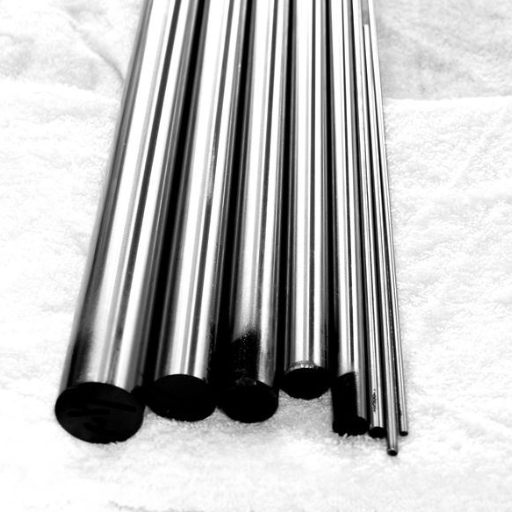
The mechanical characteristics of the 4142 steel are changed due to the microstructure alteration and the heat treatment processes done on them. Hardening increases the wear resistance and core strength due to martensite formation, while tempering increases toughness and ductility but softens the material. Balance in toughness, strength, and hardness specific to particular applications can be achieved through precise heat treatment conditions.
What is the significance of quenching and tempering?
Both quenching and tempering are indispensable for improving the mechanical properties of 4142 steel to meet its required applications. Tempering is beneficial because it allows the material’s increased hardness via quenching to be transformed into valuable levels of toughness. Quenching cools the steel rapidly and works best with water, oil, and polymer solutions. The cooled metal has an inner martensitic structure, which grants the steel a significantly higher strength and resistance to abrasion. The process does not come without downsides; however, brittleness and internal stresses are common quenching ailments. Tempered steel, which is reheated beyond room temperature, commonly between 400 and 1200F, has these properties alleviated. Strains are counteracted while brittleness, toughness, and ductility are positively impacted while carefully controlling the hardness level set in place. Quenching medium, cooling rates, and even the medium of tempering all influence subcomponents of steel like gears and shafts, giving them much-needed strong endurance without compromising resilience.
Why is annealing important in processing 4142?
When dealing with 4142 steel, careful annealing is needed because it improves a material’s machinability, refines the grain structure, and lowers internal stresses. The process also improves the steel’s ductility and toughness, allowing shaping and forming while sustaining its strength. We use annealing to ensure that steel meets specific performance criteria for demanding applications like machinery and automotive components.
What are the typical applications of 4142 metal?
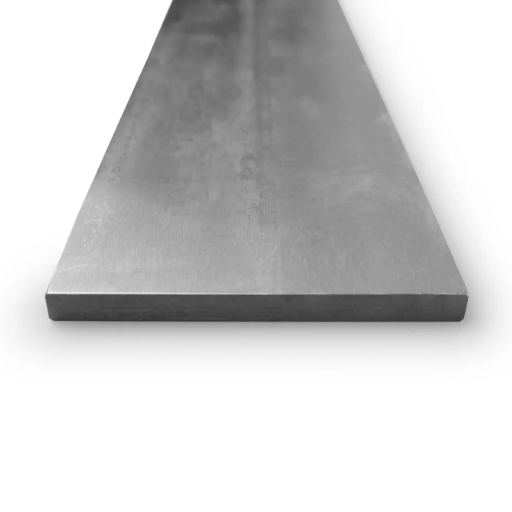
4142 steel is typically applied where a combination of strength, toughness, and wear resistance is needed, such as in manufacturing gears, shafts, axles, bolts, and machinery parts. Its durability further qualifies the alloy for mining, construction, and automotive industries, particularly for parts subjected to severe stress and high loads. Furthermore, the alloy is employed in tool and die manufacture owing to its superlative hardenability and performance under adverse conditions.
Why is it used in gear manufacturing?
Gears are made from these alloys due to their strength, toughness, and wear resistance, which renders them durable under high stress and heavy loads. Additionally, the ability to be hardened and retain performance under demanding conditions makes these alloys ideal for precise and long-lasting gear performance in automotive and machinery applications. Reliable gear systems require highly efficient, durable, and well-performing components, which these alloys can provide.
What role does it play in axle and spindle production?
The material is vital in manufacturing axles and spindles since it possesses the toughness, strength, and fatigue resistance needed to endure heavy loads and rotational forces. Its high tensile strength and yield strength guarantee durability and stability under challenging conditions, and its resistance to wear minimizes degradation over time. Moreover, precise hardness levels can be achieved through heat treatment, ensuring performance and longevity. Standard value ranges of tensile strength are 800-1200 MPa, yield strength ranging from 600-900 Mpa, and hardness values from 200-350 HB, all dependent on specific application specification requirements. These properties make it a preferred material in ensuring reliable performance of axles and spindles in automotive and heavy machinery industries.
How is it utilized in drill collars and bolt manufacturing?
Drill collars and bolts are essential features in a drill bit system; thus, their production involves materials with specific mechanical and metallurgical characteristics for drill collars that are employed to increase the weight of the drill bits for stability and balance, tough, wear-resistant, high-grade, low-alloy steels are typically utilized. They undergo heat treatment so that their tensile strength ranges from 850-1100 MPa, and their yield strength is approximately 650-900 MPa, along with a hardness of 285 – 341 HB. These features help endure the extreme mechanical stresses and the torsional loads experienced while drilling and are vitally important.
An alloy with the APPLICATION of heat treatment and corrosion-resistant stainless steel is widely used. The material must have a fair amount of ductility and high tensile strength for bolt production and high fatigue resistance. The following are the technical characteristics of high-strength bolts: a tensile strength of 800-1200 MPa, yield strength of 640-1000 MPa, and hardness measure of 280-340 HB. These values are designed to cater to the needs of the demanding uses in construction, automotive assemblage, and other engineering works that need sturdy and long-lasting perforating fasteners.
How does 4142 steel maintain its properties under various conditions?
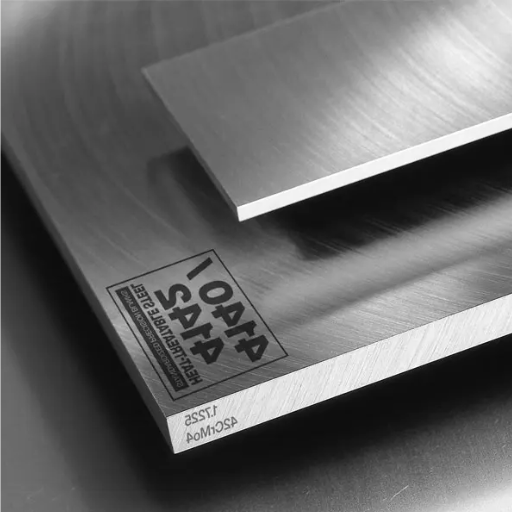
Its alloys’ distinctive composition and heat treatment capabilities explain why 4142 steel retains its properties under numerous conditions. The alloys’ contents of chromium and molybdenum improve their strength, toughness, and wear resistance for use in the most demanding environments. Proper quenching and tempering processes allow the steel to become more challenging and maintain the ability to be ductile, enabling it to perform reliably under varying degrees of stress, temperature, and mechanical loads with good impacts.
What makes it suitable for prolonged prolonged exposure at high temperatures?
The steel’s suitability for prolonged exposure to high-temperature environments is due to its distinct alloy and thermal composition. The oxidation resistance at higher temperatures is improved due to the protective oxide layer enhanced by chromium (usually present in the proportions of 0.9-1.2%). Molybdenum (0.15-0.3%) improves the steel’s strength by adding resistance against creep deformation at high temperatures. Furthermore, the refined heat treatment process ensures good microstructure balance, allowing ductility and hardness to be retained even in prolonged thermal stress conditions. These features result in the 4142 alloys being unmatchable in reliability under the high temperatures and varying loading conditions of materials in power generation, petrochemical processing, and aerospace industries.
How does it exhibit wear resistance?
The unique alloy combination and the heat treatment process contribute to the wear resistance of these parts. The inclusion of chromium, molybdenum, and vanadium aids the material’s resistance to abrasion and surface degradation. In addition, the optimized microstructure where carbides are uniformly dispersed contributes to durability while reducing wear even in very harsh conditions. Thus, it suits heavy-duty industrial applications where friction and surface wear are perennial problems.
What contributes to its ductility and excellent toughness?
The excellent toughness and dexterity of the material are due to the tailored chemical composition and the heat treatment process employed. Toughness is enhanced due to elements such as nickel and manganese, which effectively promote grain refinement and prevent brittle behavior. Also, controlled heat treatment of the material’s microstructure enhances toughness by balancing hardness and flexibility. This enables the material to experience much energy without fracturing, thus ideal for any application that demands strength and resilience.
What distinguishes 4142 from other grades like 4140 and AISI steel?
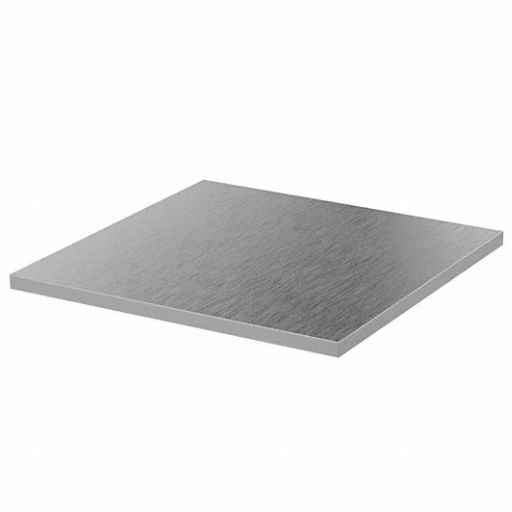
4142 steel is set apart from 4140 due to its higher carbon content, making it more brittle yet better suited for conditions requiring increased durability. Compared to other AISI steel grades, 4142 is outstanding due to its strength, toughness, and machinability brought by its alloyed chrome, molybdenum, and manganese. These make 4142 ideally suited for high-configuration components such as shafts, gears, and fasteners.
How does the molybdenum content affect the properties?
The Molybdenum content in AISI 4142 steel significantly enhances the strength, hardenability, and resistance to high-temperature wear, making it unique from other AISI steel grades. Molybdenum aids with the thermal stress/strain of the steel by increasing the creep strength and structural stability under thermal loads. The typical molybdenum content in AISI 4142 steel is 0.15-0.25%, which is perfect for high-stress situations. Also, Molybdenum improves toughness and reduces susceptibility to temper brittleness, making the alloy suitable for harsh environments. This increases the durability and reliability of components like gears and shafts required to perform under load trenched out.
What are the typical performance metrics in the industry?
Several assessment metrics are commonly used for industrial materials applications, such as AISI 4142. In comparison to other materials, how AISI 4142 struck a balance between effectiveness and its suitability across various applications was analyzed based on the following parameters:
- Tensile Strength
AISI 4142’s tempered and quenched state shows its tensile strength ranging from 950 to 1150 MPa (137,000 to 167,000 psi). This characteristic indicates its ability to handle force before breaking down.
- Yield Strength
The yield strength measure showing AISI 4142’s ability to withstand the stress that causes the material to begin to deform plastically is usually between 745 and 960 MPa (108,000 and 139,000 psi).
- Hardness
Measurement of the hardness of AISI 4142, which is usually tempered between 28 and 32 HRC, is used to determine deformation resistance and durability, especially in machining parts such as gears and shafts.
- Impact Energy (Toughness)
AISI 4142’s ability to absorb energy during fractures and its measure of deformation resistance to brittle fracturing has a typical measure of 30 – 35 J at room temperature.
- Fatigue Strength
Components subjected to cyclical loading show fatigue strength typically around 50 percent of the tensile strength.
Employing these measures ensures optimal engineering performance outcomes while enabling the reliability and performance of AISI 4142 under extreme conditions and multifunctional capabilities to be assessed.
References
- AISI 4142 Alloy Steel (UNS G41420) – AZoM
- Alloy Steel Grade 4142 Fact Sheet – Elgin Fasteners
- LSS™ 4140 and 4142HT Alloy Steels – Hudson Tool Steel
Frequently Asked Questions (FAQ)
Q: What is 4142 Alloy Steel and what are its primary applications?
A: 4142 Alloy Steel is a versatile material known for its hardness and high strength. It is commonly used to manufacture tools, shafts, and components that require durability and resistance to wear. Its applications span various industries, including automotive, aerospace, and industrial machinery.
Q: What are the key physical properties of 4142 Alloy Steel?
A: The physical properties of 4142 Alloy Steel include excellent toughness, good ductility, and a high hardness level. It maintains its properties even after prolonged exposure to relatively high working temperatures. The material’s Brinell and Rockwell C hardness range from 27 to 32, balancing strength and workability.
Q: How does the thermal performance of 4142 Alloy Steel enhance its use in industrial applications?
A: 4142 Alloy Steel maintains its properties even after long exposure at relatively high working temperatures, making it ideal for thermal stress applications. Its ability to retain high strength and toughness under thermal conditions is a key factor in its use in industrial tools and machinery.
Q: Why is 4142 HT Steel preferred for making machine components like shafts and cams?
A: 4142 HT Steel, or 4142 steel that has been hardened, offers exceedingly high strength and excellent toughness, making it ideal for machine components such as shafts and cams. The uniformity of hardness and high strength imparted by molybdenum ensure reliable performance under mechanical stress.
Q: What is the significance of Rockwell C hardness in 4142 Alloy Steel?
A: The Rockwell C hardness of 4142 Alloy Steel, ranging from 27 to 32, measures its hardness and wear resistance. This range indicates that the material is ready for use in demanding applications requiring durability and robustness.
Q: How does adding molybdenum affect the properties of 4142 Alloy Steel?
A: Molybdenum imparts hardness and high strength uniformity to 4142 Alloy Steel. This addition enhances the steel’s ability to withstand mechanical stress and contributes to its excellent performance in applications that demand durability and toughness.
Q: Can 4142 Alloy Steel be easily machined and processed for custom applications?
A: 4142 Alloy Steel can be machined and processed relatively quickly, making it suitable for custom applications. Its composition allows it to be shaped into various components like tools, bars, and stock for industrial use while maintaining its excellent mechanical properties.
Q: What role does 4142 Alloy Steel play in tool manufacturing?
A: 4142 Alloy Steel is widely used in tool manufacturing due to its hardness and durability. The material provides the strength and wear resistance needed for tools that must withstand heavy-duty use and maintain their performance over time.
Q: Who are the typical suppliers of 4142 Alloy Steel?
A: Typical suppliers of 4142 Alloy Steel include industrial steel distributors and specialized metal suppliers. These suppliers provide the steel in various forms, such as bars and stock, suitable for different applications in sectors like automotive, construction, and manufacturing.







